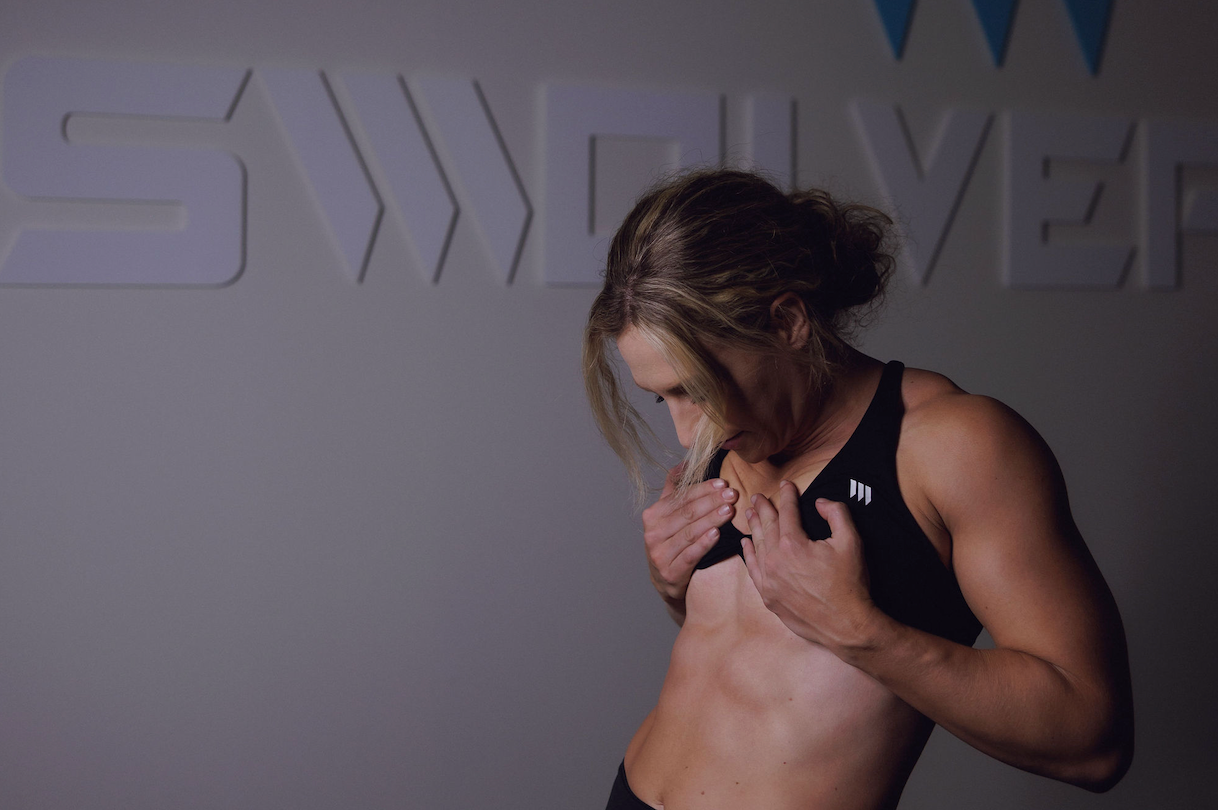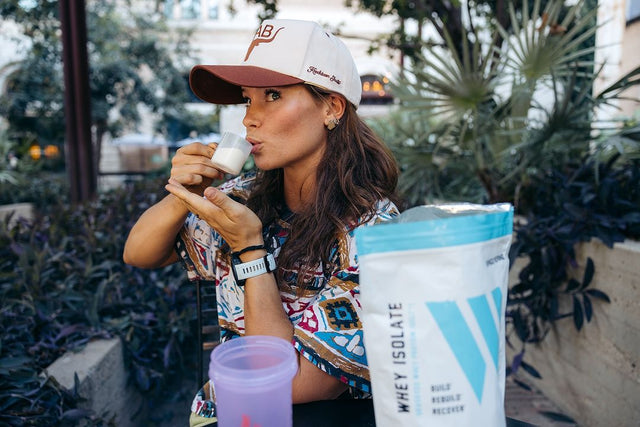Are you trying to shed those stubborn pounds but wondering what exactly your body burns first, fat or muscle? It's a common question amongst those on a weight loss journey, and today, we're here to unveil the truth. In this article, we'll dive deep into the science behind fat and muscle metabolism to determine whether your body burns fat or muscle first.
While there is a common misconception that the body burns muscle before fat, the reality is quite different. When in a calorie deficit, the body primarily taps into its fat reserves to meet its energy needs. This is because fat stores provide a more efficient and long-lasting source of fuel compared to muscle tissue.
However, it's important to note that the body does utilize some muscle protein for energy during weight loss. This is especially true if you follow an extreme caloric restriction or fail to provide adequate protein intake. We'll explore the factors that influence whether muscle loss occurs and how to minimize it during your weight loss journey.
Stay tuned as we peel back the layers and uncover the truth about whether the body burns fat or muscle first. Get ready to arm yourself with knowledge to make informed choices and optimize your weight loss efforts.
Here is your content, fully formatted for readability and optimized for educational or blog use. It includes headers, subheaders, inline blockquoted scientific citations, and a clean structure that supports SEO and reader engagement.
The Science Behind Fat Burning and Muscle Loss
Understanding the physiological processes behind fat burning and muscle loss is key for anyone interested in body composition, performance, or long-term weight management. At the heart of these changes lies metabolism, which encompasses all biochemical reactions that convert food into energy.
When we consume more calories than we burn, the surplus energy is stored—primarily as body fat. In contrast, a caloric deficit—consuming fewer calories than we expend—forces the body to draw on these energy reserves, mobilizing stored fat for fuel. This energy shift is vital for fat loss and metabolic health.
"Energy balance, or the relationship between energy intake and expenditure, determines whether weight is gained, lost, or maintained."
— Hall et al., The Lancet
How Fat Is Burned
Fat is stored in adipose tissue as triglycerides, which yield about 9 calories per gram—more than double that of carbohydrates or protein (4 calories/gram). When the body needs energy, it initiates lipolysis, breaking down triglycerides into free fatty acids and glycerol to be used as fuel.
This process is influenced by several factors, including:
-
Hormonal regulation (e.g., insulin, epinephrine)
-
Energy demands from physical activity
-
Nutrient availability and timing
"Lipolysis is regulated by hormones like insulin and catecholamines, which control fat mobilization based on energy needs."
— Frayn, Journal of Clinical Investigation
How Muscle Loss Occurs
While fat is the body’s preferred energy source during weight loss, muscle protein can also be broken down, especially during severe caloric restriction or low protein intake. This process involves the catabolism of muscle tissue, releasing amino acids into the bloodstream that can be converted into glucose through gluconeogenesis.
"In the absence of sufficient dietary protein or during prolonged fasting, the body turns to skeletal muscle as a source of amino acids for glucose production."
— Cahill, Annual Review of Nutrition
To prevent this, meeting your daily protein needs is essential. This is where a protein supplement like Swolverine’s Whey Protein Isolate can support your recovery, muscle retention, and macronutrient goals during fat loss.
What Determines Whether You Burn Fat or Muscle?
Several factors influence whether your body burns fat or muscle while in a caloric deficit:
1. Size of the Caloric Deficit
A moderate caloric deficit is ideal. When the deficit is too aggressive, the body may not receive enough energy to preserve lean tissue—leading to muscle catabolism.
"Excessively large deficits may increase the risk of lean mass loss, particularly without sufficient protein intake or resistance exercise."
— Pasiakos et al., Journal of Nutrition
2. Dietary Protein Intake
Adequate protein intake is critical for muscle preservation. High-protein diets support muscle repair, blunt muscle breakdown, and improve satiety during weight loss.
"Higher protein intake during caloric restriction significantly attenuates the loss of lean body mass and enhances fat mass loss."
— Layman et al., Journal of Nutrition
3. Hormonal Regulation
Hormones like insulin, cortisol, and growth hormone impact your body’s choice of fuel.
-
Elevated insulin suppresses fat oxidation.
-
Chronically high cortisol levels can increase muscle breakdown.
-
Growth hormone and testosterone can enhance fat burning and muscle preservation.
"Hormonal responses to diet and exercise regulate substrate utilization, with insulin and cortisol playing key roles in fat and protein metabolism."
— Hackney, Endocrinology of Physical Activity and Sport
The Role of Exercise in Fat Burning and Muscle Preservation
Exercise is one of the most effective strategies to maximize fat loss while minimizing muscle loss.
Resistance Training
Strength training is essential during a caloric deficit. It stimulates muscle protein synthesis, which helps preserve or even build muscle tissue despite being in a deficit.
"Resistance training during energy restriction preserves lean mass and promotes fat loss when combined with adequate protein intake."
— Josse et al., Applied Physiology, Nutrition, and Metabolism
Aerobic Training and HIIT
Cardio, particularly moderate-intensity steady-state (MISS) and High-Intensity Interval Training (HIIT), helps elevate energy expenditure and improves fat oxidation.
"HIIT produces similar or greater fat loss than traditional endurance training in less time, while preserving lean mass."
— Boutcher, Journal of Obesity
Free Resource: DOWNLOAD OUR FREE 6-WEEK HIIT TRAINING PROGRAM
The Impact of Diet on Fat Burning and Muscle Loss
Dietary composition and nutrient timing greatly affect whether your body favors fat or muscle as a fuel source during weight loss.
Macronutrient Balance
-
Protein: Essential for muscle maintenance and has a high thermic effect.
-
Carbohydrates: Fuel performance, especially during high-intensity training.
-
Fats: Important for hormonal function and overall health.
"Protein has a higher thermic effect and contributes to greater satiety and lean mass preservation during calorie restriction."
— Leidy et al., American Journal of Clinical Nutrition
Carb Quality Over Elimination
Instead of eliminating carbohydrates, focus on complex carbs like whole grains, fruits, and vegetables, which support energy levels and recovery.
"Low-carb diets may increase lean mass losses if protein intake and training are not optimized."
— Helms et al., International Journal of Sport Nutrition and Exercise Metabolism
Nutrient Timing
Eating protein around workouts enhances muscle repair and recovery, making pre- and post-workout nutrition critical for anyone in a deficit.
"Protein intake around resistance exercise augments strength and body composition changes during weight loss interventions."
— Areta et al., Journal of Physiology
RELATED ARTICLE: Macronutrients for Weight Loss
The Best Free Macro Calculator
Use our Free Macro Calculator to determine your calorie, protein, fat, and carb targets based on your goals.
Common Misconceptions About Fat Burning and Muscle Loss
When it comes to weight loss, misinformation is everywhere. From crash diets to overhyped workout routines, myths about fat burning and muscle loss often derail progress and lead to frustration. Understanding the science behind these processes can help people adopt more effective, sustainable strategies.
Myth 1: You Can Build Muscle and Burn Fat at the Same Time… Easily
While body recomposition—building muscle and losing fat simultaneously—is possible, especially in beginners, it’s not as easy or common as fitness influencers make it seem. Most people will experience this effect during their first few months of training, largely due to neuromuscular adaptations, not actual muscle hypertrophy.
"Initial strength gains are primarily due to neuromuscular efficiency rather than muscle hypertrophy, especially in untrained individuals."
— Moritani & deVries, American Journal of Physical Medicine
True muscle growth requires time, progressive overload, adequate caloric intake, and high protein availability—factors that don’t align easily with a caloric deficit.
Myth 2: All Weight Loss Is Fat Loss
One of the most dangerous misconceptions is believing that any drop on the scale equals fat loss. In reality, without proper nutrition and training, especially resistance training, a portion of that loss could be lean muscle mass.
"Lean mass loss can account for up to 25% of total weight loss during hypocaloric diets without sufficient protein intake and resistance training."
— Stiegler & Cunliffe, Sports Medicine
Focusing on body composition (fat vs. muscle) rather than just weight is crucial for achieving a lean, strong, and healthy physique.
Myth 3: Prolonged Fasting and Extreme Caloric Restriction Are Best for Fat Loss
Crash diets and long fasting periods may yield rapid weight loss, but often at the cost of muscle. Over time, this leads to metabolic slowdown and higher rates of rebound weight gain.
"Severe energy restriction leads to a loss of fat-free mass and a decrease in resting metabolic rate, undermining long-term weight loss efforts."
— Muller et al., Obesity Reviews
The best approach? A moderate deficit, sustainable habits, and consistent protein intake.
Strategies to Maximize Fat Burning While Minimizing Muscle Loss
If your goal is to get lean while keeping your hard-earned muscle, here’s how to do it—backed by evidence.
1. Strength Train Regularly
Resistance training signals the body to retain and rebuild muscle, even in a calorie deficit. Focus on compound movements like squats, deadlifts, presses, and rows.
"Resistance training combined with energy restriction results in significantly greater fat mass reduction and lean mass preservation than diet alone."
— Weinheimer et al., Nutrition Reviews
Aim for at least 2–4 strength sessions per week, ideally with progressive overload.
2. Prioritize Protein Intake
Consuming enough protein supports muscle recovery and preservation during fat loss. Research recommends 1.6–2.2 g/kg of bodyweight daily, depending on training intensity.
"Protein intakes in the range of 1.6 to 2.2 g/kg/day are optimal for preserving lean mass during caloric restriction in resistance-trained athletes."
— Morton et al., British Journal of Sports Medicine
Use high-protein snacks like Greek yogurt, eggs, and Swolverine’s Whey Isolate to hit your target consistently.
3. Incorporate HIIT and Interval Training
HIIT elevates energy expenditure, boosts metabolic rate, and promotes fat burning without significant muscle loss.
"HIIT increases post-exercise energy expenditure and fat oxidation while preserving lean body mass better than continuous moderate-intensity exercise."
— Keating et al., Obesity Reviews
HIIT is especially effective when combined with a high-protein diet and strength training.
Case Studies and Real-Life Examples
Competitive Bodybuilders
In prep phases, competitive athletes gradually decrease calories while keeping protein high and lifting heavy. They avoid extreme deficits and use structured refeed days or diet breaks to maintain muscle and performance.
"Competitive natural bodybuilders often preserve lean mass during cutting by prioritizing protein, resistance training, and slow, controlled energy reduction."
— Helms et al., Journal of the International Society of Sports Nutrition
Everyday Clients in Structured Programs
In programs that combine resistance and aerobic training with balanced nutrition, clients see reductions in body fat while increasing strength and preserving lean mass.
Real-life client outcomes show:
-
~1–2 lbs fat loss/week
-
Improved muscle tone and strength
-
Sustainable eating habits
Individual Differences Matter
Some clients thrive on moderate-carb, high-protein diets, while others respond better to low-carb, high-fat protocols. Customizing diet and training based on biofeedback and progress tracking is essential.
Tips for Maintaining Muscle Mass While Losing Fat
1. Spread Protein Throughout the Day
Consuming 20–40g of protein per meal stimulates muscle protein synthesis and supports recovery.
"Distributing protein intake evenly across meals enhances muscle anabolism throughout the day."
— Areta et al., Journal of Physiology
2. Time Nutrients Around Workouts
Pre- and post-workout meals rich in carbs + protein enhance energy, recovery, and glycogen replenishment.
"Nutrient timing enhances adaptations to resistance training and supports muscle maintenance during energy restriction."
— Ivy & Portman, Nutrient Timing: The Future of Sports Nutrition
3. Get Quality Sleep and Recovery
Sleep deprivation increases cortisol and impairs muscle recovery. Aim for 7–9 hours per night and schedule rest days to reduce training stress.
"Sleep plays a critical role in muscle recovery, hormonal balance, and maintaining fat-free mass during dieting."
— Dattilo et al., Medical Hypotheses
The Key to Fat Loss Without Muscle Loss
Fat loss doesn’t have to come at the cost of muscle. By dispelling common myths, building your plan around protein, strength training, and recovery, and staying patient with the process, you can achieve a leaner, stronger physique—without sacrificing hard-earned muscle.
Key takeaways:
-
Focus on body composition, not just weight.
-
Use a moderate calorie deficit—avoid extremes.
-
Train smart: Lift, eat protein, sleep, repeat.
Every body is different, and the best approach is the one that works for you, is sustainable, and honors both performance and wellness.
Conclusion: Finding the right balance for optimal fat burning and muscle preservation
In conclusion, understanding the intricate relationship between fat burning and muscle preservation is essential for anyone embarking on a weight loss journey. While the body primarily utilizes fat stores for energy during a caloric deficit, it is crucial to implement strategies that minimize muscle loss. By prioritizing resistance training, adequate protein intake, and strategic meal timing, individuals can create a sustainable approach to fat loss that preserves lean muscle mass.
Additionally, dispelling common misconceptions about muscle and fat metabolism empowers individuals to make informed decisions about their nutrition and exercise regimens. Recognizing that muscle loss can occur without proper care highlights the importance of a balanced approach that encompasses both dietary and physical activity components. Each person’s journey is unique, and finding the right balance tailored to individual needs and preferences is key to achieving long-term success.
Ultimately, optimizing fat burning while maintaining muscle mass is a journey that requires patience, consistency, and a commitment to healthy habits. By arming oneself with knowledge and employing effective strategies, anyone can navigate the complexities of weight loss with confidence and efficacy, paving the way for a healthier and fitter future.







